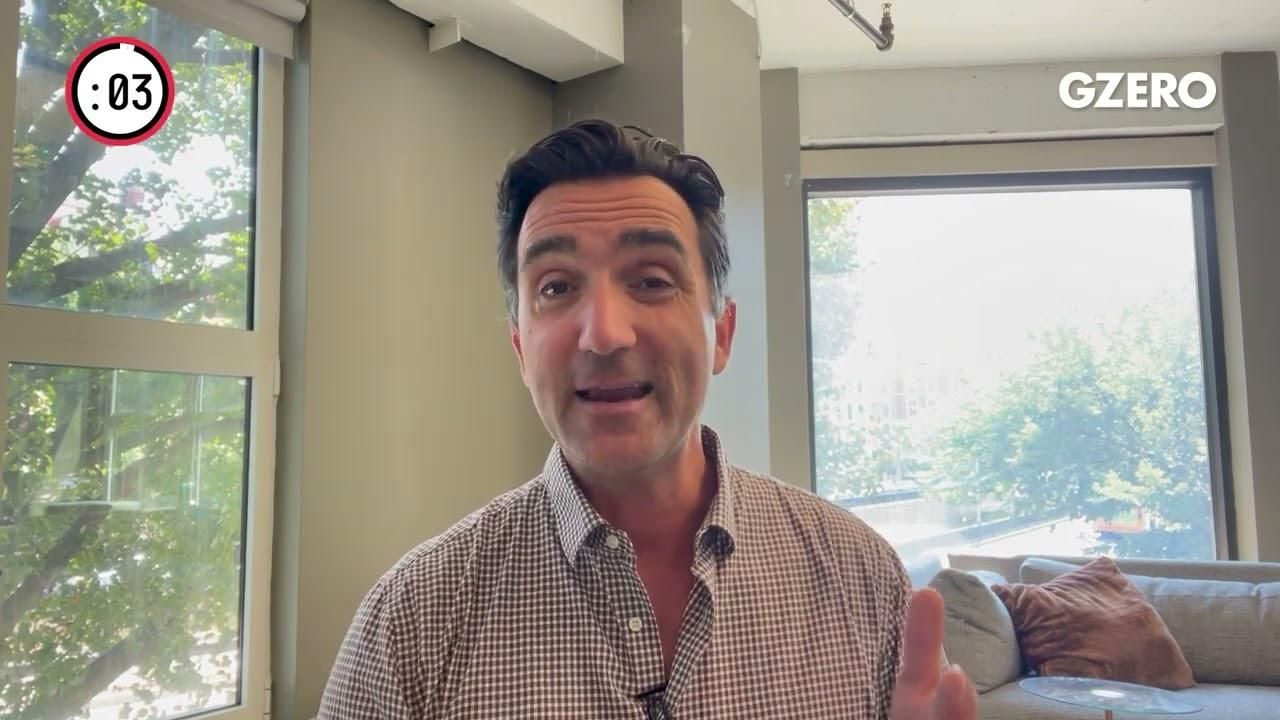US Politics In 60 Seconds
$10,000 in student loan forgiveness: what's the point?

$10,000 in Student Loan Forgiveness: What's the Point? | US Politics | GZERO Media

Jon Lieber, head of Eurasia Group's coverage of political and policy developments in Washington, DC, shares his analysis on US politics.
Today's question, $10,000 in student loan forgiveness: what's the point?
President Biden is going to announce up to $10,000 in student loan forgiveness for people making up to $125,000 a year. This is far short of the full student loan forgiveness that progressive activists have been calling for and even short of the $50,000 that Democratic leaders had embraced and Biden was considering earlier in the year. Still, the forgiveness is estimated to provide at least some relief for the vast majority of the 40 million Americans with student loans and will entirely wipe out the obligations of up to 15 million Americans.
Biden was very slow and hesitant to make this call, struggling with the issues of fairness. Millions of Americans who have paid off their loans or benefited from their parent's savings, sometimes at great personal cost, will receive nothing from this plan. And it is estimated to cost the federal government over $300 billion, wiping out entirely the savings from the recently passed Inflation Reduction Act. It could also be challenged legally, as there has been no explicit congressional authorization to forgive the debt. And it is Congress, not the executive branch, who controls spending. Politically, there is risk of some backlash, as Republicans see the chance to point out that taxpayers are subsidizing the borrowing of college educated Americans who tend to have higher lifetime incomes and better job opportunities. But for progressive activists and young voters, these concerns do not resonate, given that they think education should be a right that is fully funded by the government.
One issue that Biden is unlikely to address is the rising cost of a college education, which has massively outpaced inflation over the last several decades, partially driven by federal subsidies that support it. The move also introduces moral hazard that could increase future borrowing on the expectation that there will be more rounds of student loan forgiveness under future Democratic administrations. Politically, this is likely to be very popular with young voters who will disproportionately benefit from the forgiveness and get a mixed reaction from other Americans who are largely divided on the issue of student loan relief. Unfortunately for Democrats, young voters are some of the least reliable voters, and Democrats are hoping that this issue activates their base in November. Even if the forgiveness falls far short of what progressive access activists were hoping for.
America’s new National Security Strategy confirms what Europeans have feared for months: Washington now sees a strong, unified European Union as a problem to be solved, not an ally to be supported.
In this episode of Tools and Weapons, Microsoft Vice Chair and President Brad Smith sits down with Ed Policy, President and CEO of the Green Bay Packers, to discuss how purpose-driven leadership and innovation are shaping the future of one of the world’s most iconic sports franchises. Ed shares how technology and community-focused initiatives, from Titletown Tech to health and safety innovations on the field, are transforming not just the game of football, but the economy and culture of Green Bay itself. He explains how combining strategic vision with investment in local startups is keeping talent in the Midwest and creating opportunities that extend far beyond Lambeau Field.
Subscribe and find new episodes monthly, wherever you listen to podcasts.
More than a week after Hondurans cast their ballots in a presidential election, the country is still stuck in a potentially-dangerous post-election fog.